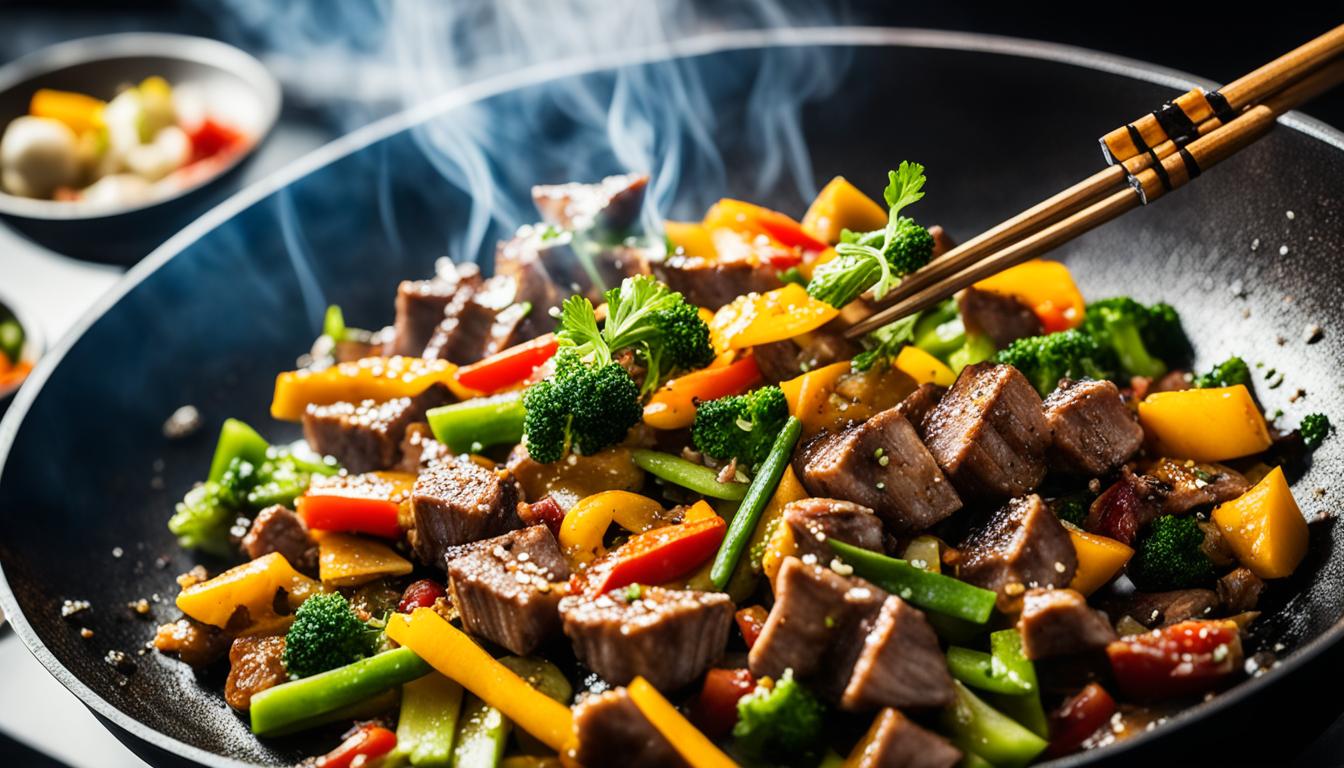Do you want to unlock the secret to creating irresistibly flavorful and crispy dishes? Whether you’re a passionate home cook or an aspiring chef, mastering the art of dry frying in a wok is a skill that can elevate your culinary creations to new heights. But what exactly is dry frying, and how can you harness the power of this ancient Chinese cooking technique?
The Benefits of Using a Wok for Dry Frying
Dry frying in a wok offers several advantages over other cooking methods. The shape of the wok allows for rapid and even cooking, as the food can be easily stirred and tossed. The thin, conductive material of the wok heats up quickly, resulting in faster cooking times. The wok’s high heat retention and responsive heat transfer help to achieve the desired texture and flavor of dry-fried dishes. Additionally, the seasoning of a wok, which involves building layers of polymerized oil, can add a unique flavor to the food. To effectively dry fry in a wok, it is important to heat the wok before adding oil, use the right tools like a spider or a slotted spoon, and create distinct heat zones in the wok to ensure proper cooking.
The History and Evolution of Stir-Frying in a Wok
Stir-frying in a wok has a rich and fascinating history that spans thousands of years in China. Stir-fry wok skills, known for its versatility and speed, can be traced back to the ancient bronze inscriptions from the Eastern Zhou period that referred to “炒” (ch’ao) as “dry stirring.”
As time passed, the term “chao” evolved to encompass both the drying technique and the cooking method. During the Ming and Qing dynasties, stir-frying gained popularity in China due to its ability to quickly cook food without wasting fuel. The technique offered a fast and efficient way to prepare dishes while preserving the natural flavors and textures of the ingredients.
Chinese immigrants brought their stir-frying techniques with them as they established communities around the world, spreading the art of stir-frying to different cultures and cuisines. Today, stir-frying has become an integral part of many global culinary traditions.
The English term “stir-fry” was coined in the 20th century to describe the Chinese cooking technique. This method involves rapid cooking over high heat, typically in a wok, using a small amount of oil. Stir-frying has revolutionized home cooking and has become a staple technique in many kitchens worldwide.
The Advantages of Using a Wok for Stir-Frying
Using a wok for stir-frying offers several advantages compared to using a skillet. The shape and construction of a wok, with its concave surface and tall, sloped sides, allow for rapid and dynamic movement of food through different heat zones. This results in faster and more even cooking.
The thin and highly conductive material of a wok heats up quickly and responds well to changes in heat, making it ideal for stir-frying. The distinct heat zones in a wok, including the hot conductive zone and the steaming and convection zones, allow for precise control over the cooking process.
Additionally, a seasoned wok can add a unique flavor to the stir-fried food. While stir-frying can be done in a skillet, using a wok provides the best results in terms of texture, flavor, and efficiency.
